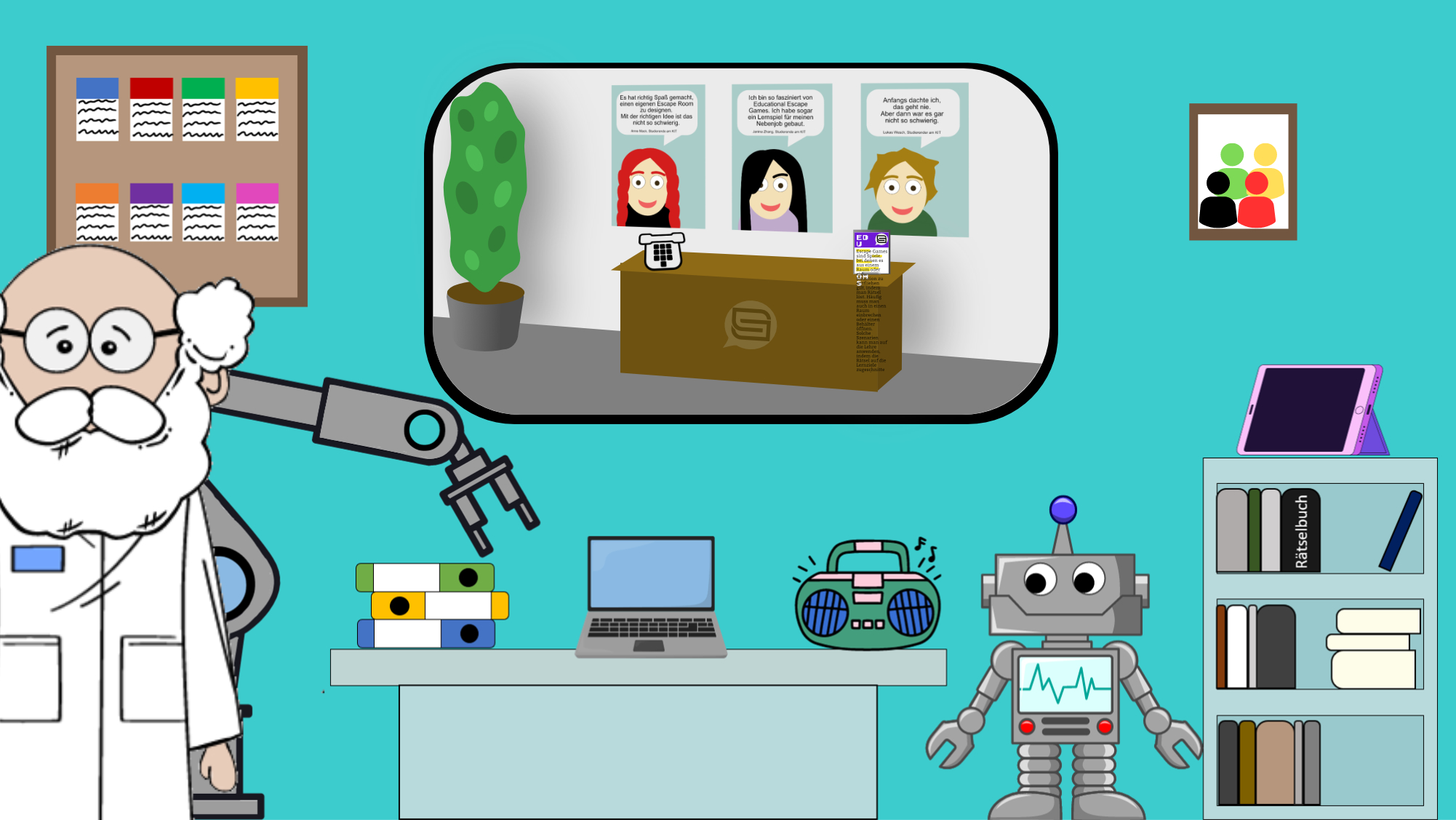In today's educational landscape, personalized learning processes are becoming increasingly important. Educational Escape Rooms (EER) offer a creative way to actively engage learners and guide their individual learning journey. The best thing about it is that you don't need a lot of effort or special programming skills to create your own escape room.
![]() Contact persons at the ZML
Contact persons at the ZML
Svenja Geißler
Phone: +49 721-608-48154
E-mail: svenja.geissler∂kit.edu
What is an Educational Escape Room?
An educational escape room is an interactive learning game. Participants solve tasks to escape from a virtual room or to get into a room. In this way, problem-solving skills and the application of knowledge are promoted and the direct reward comes from the progress of the game. EERs are therefore highly motivating, which has a positive effect on learning effectiveness.
Edu Escape Rooms (EER) are suitable as assessments as they promote a solution-oriented approach and there is an easy way to incorporate tasks with auto-feedback. An EER can also impart knowledge through narration or hints. They can serve as an "EduPalace" (mnemonic technique) by arranging information in such a way that learners can recall their knowledge based on memories. They also motivate students during self-study phases in blended learning, especially in the inverted classroom. EERs can also be used instead of lectures, as they are easy to implement and students can create information units themselves, which avoids problems with the allocation of lecture dates.
Two examples of Educational Escape Rooms
Create your own Educational Escape Room
- Define learning objectives: Start with clear learning objectives.
- Link content: Link the learning objectives with the corresponding content and divide them into small units.
- Create interactive tasks: Use H5P, a plugin that is integrated on many learning management systems.
- Develop a storyline or context: A good story or context motivates learners and makes immersion in the virtual world much more exciting. Escape rooms can be designed in three different ways:
- Linear path: the tasks must be solved in a fixed order.
- Open path: The tasks can be solved in any order, except for the last task.
- Multilinear path: Several linear task paths can be completed simultaneously and cross each other. - Visual design: Choose an image or design a room from simple shapes and integrate them into an H5P presentation.
- Place notes and tasks: Place buttons on the elements that serve as cues. Think about where the H5P tasks should be placed in the room and which tasks provide hints in the feedback.
You can learn all this in the "Learning lab escape room" example above.
Try it out and see for yourself how much fun and motivation an Educational Escape Room can bring to the learning process!



